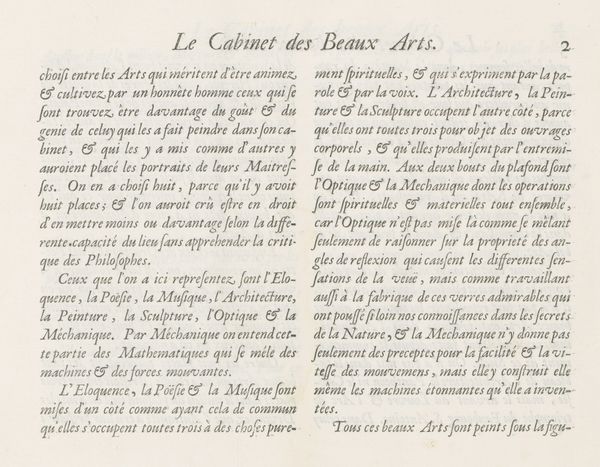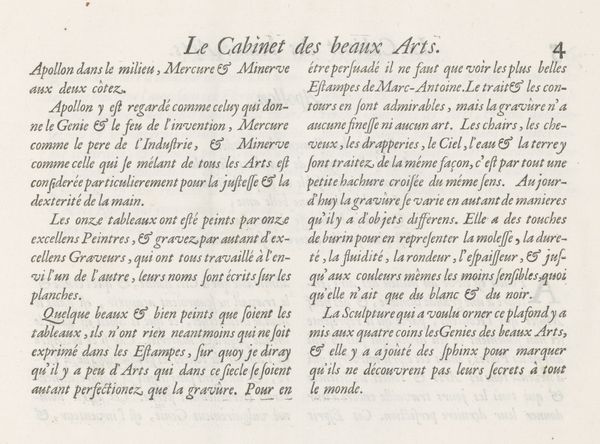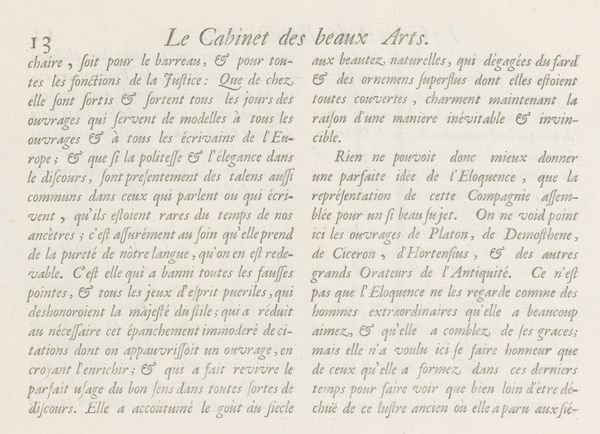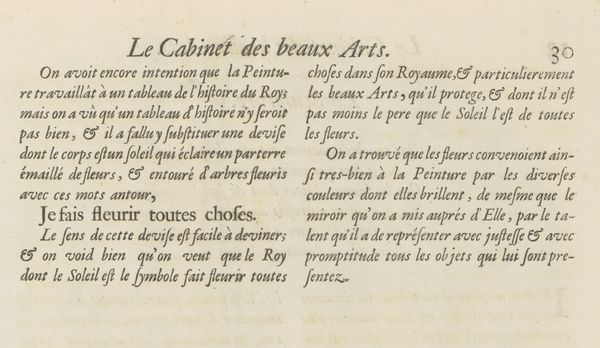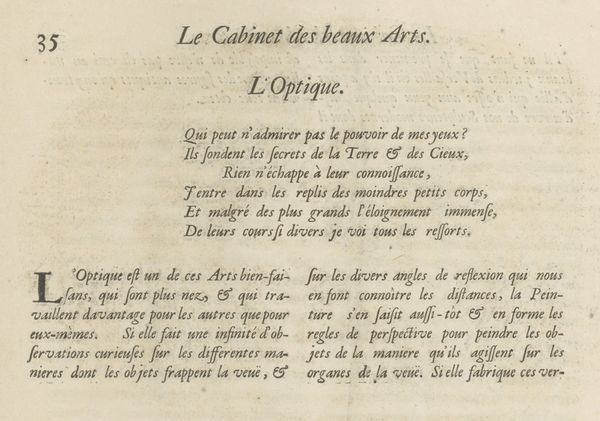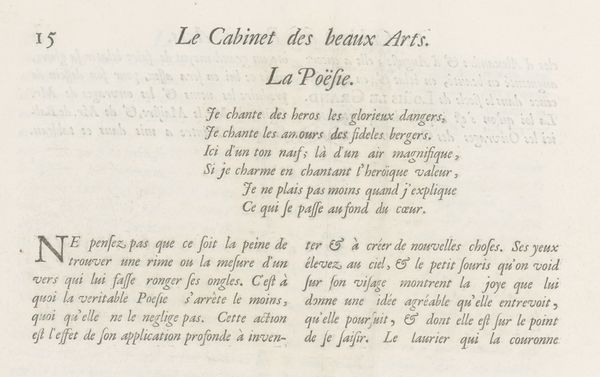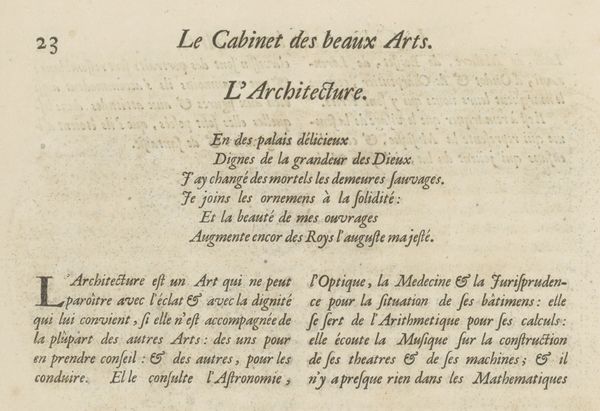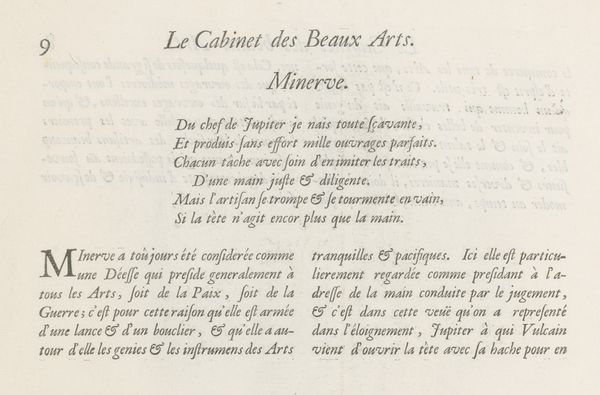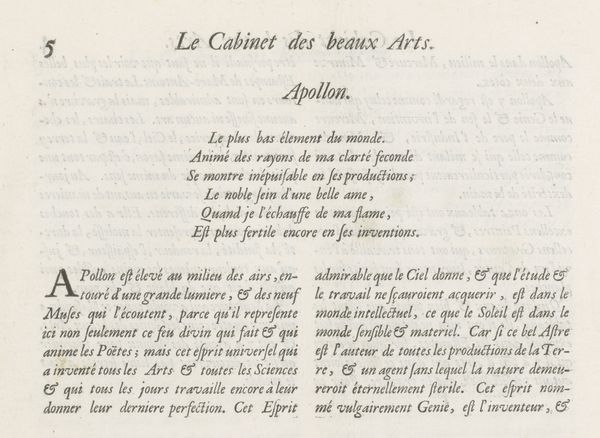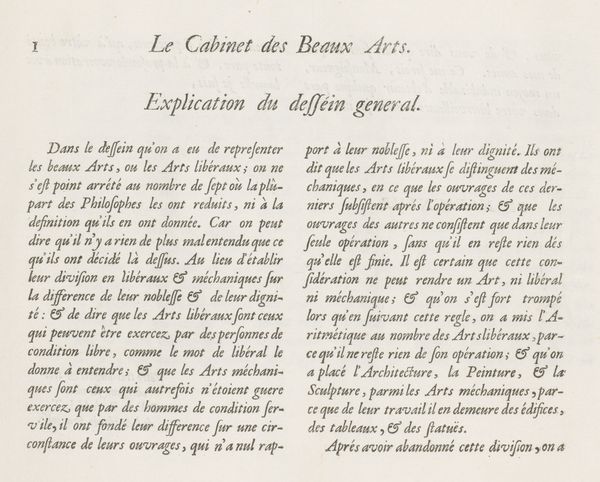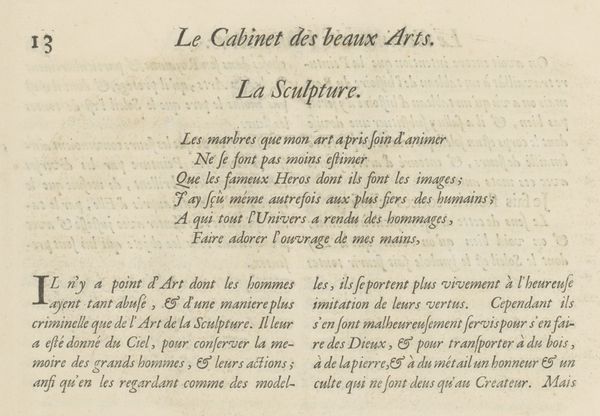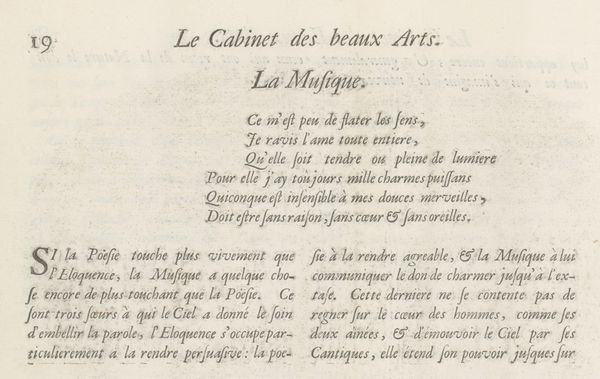
print, typography
#
hand-lettering
#
baroque
# print
#
hand lettering
#
typography
Dimensions: height 281 mm, width 380 mm
Copyright: Rijks Museum: Open Domain
Curator: Here we have a printed text page, dated 1695, believed to be written by Charles Perrault. Editor: It's very text-heavy; dense blocks filling the page. It almost has a velvety texture visually, like woven thread. Curator: Indeed. The typography reflects a specific moment in printing history. Looking at this through the lens of social history, it served a vital role in circulating ideas and influencing public taste. Texts such as this provide invaluable insight into the artistic dialogues and aspirations of the era, promoting the very idea of a canon. Editor: You’re right, seeing it as a vehicle, it brings me to considering the paper itself. Was it mass-produced or hand-laid? The ink—what was its composition, and how does its aging alter our experience? The labor involved is considerable, a web of people connected to its creation. This isn't simply 'content'; it’s materialized thought, fixed through very specific methods. Curator: The choice of language—the arguments it presents about contemporary art being just as valid as classical art— these were bold statements challenging the prevailing norms. It makes me consider the institutional forces shaping Perrault's viewpoints and how those power structures shaped our modern perception of fine art. Editor: And how would its original audience engage? A close read? A public reading? This process shaped the experience of those first consuming this printed matter. Considering these points pulls the work out of its supposed rarified historical context and locates it more intimately within material and sensory environments. Curator: Exactly. By understanding the societal influences interwoven into its very creation, we can better grasp its continued influence in contemporary art discourse. Editor: It’s more than just text; it’s an object testifying to methods of production, dissemination, and engagement within specific socio-historical circumstances.
Comments
No comments
Be the first to comment and join the conversation on the ultimate creative platform.
